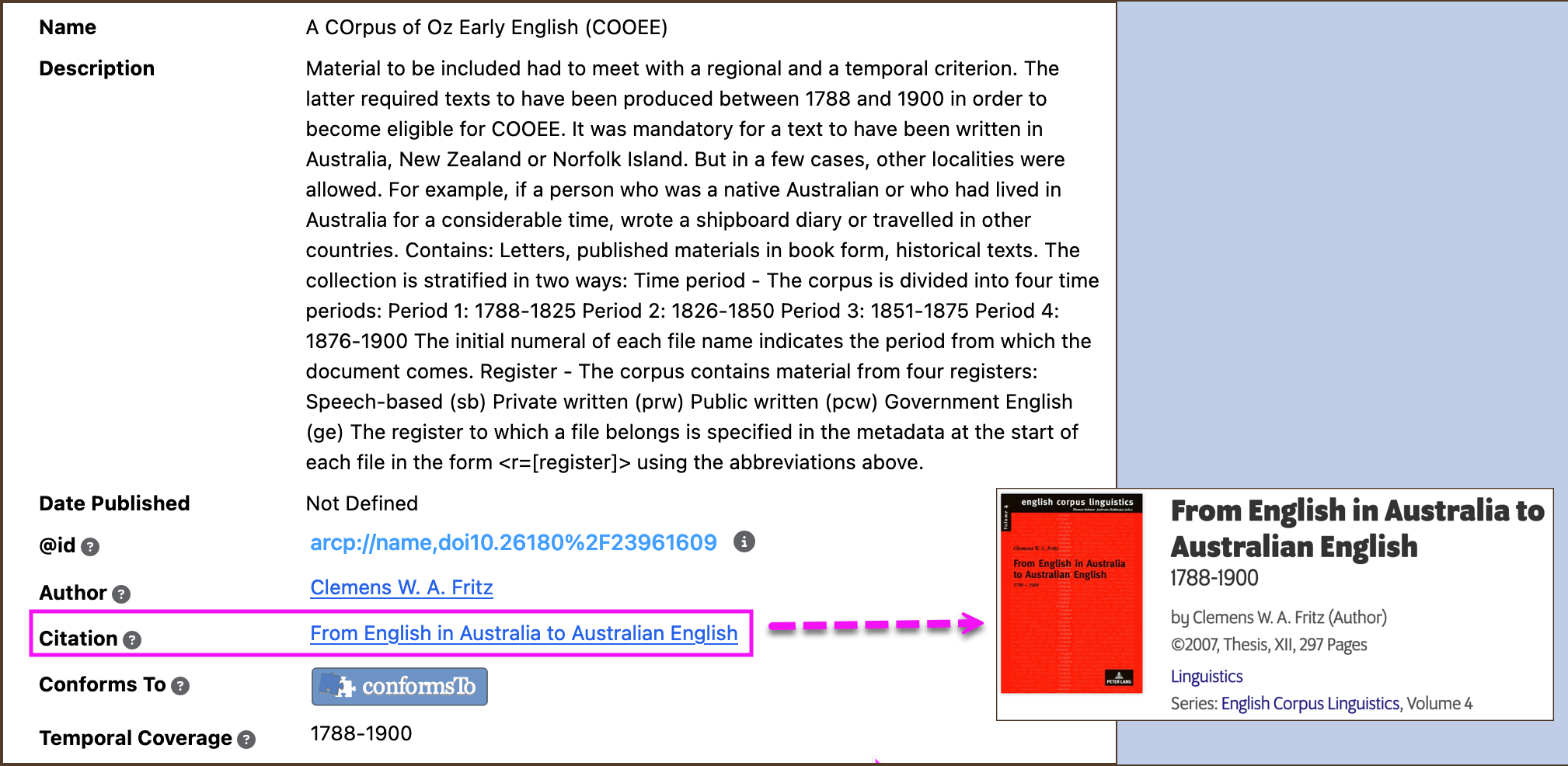This user guide uses ‘portal’ to refer to the interface across all of the available Oni portals (see Available Portals for more details).
Citing a Collection
Citing Parts of a Collection
Citing Published Work
Citing LDaCA as Access Source
Follow this guide when you need to cite a data source that you accessed through the LDaCA portal in a publication.
Citing a Collection
Cite the collection as a whole whenever you use, or need to refer to, any part of it in your work, unless otherwise stated in the citation information provided in the LDaCA portal.
You can find each collection’s citation information on the collection level page under “How to cite this collection”. The collection level page is the webpage presented upon selection of the collection name from the portal homepage or from a list of search results. Note that this citation information is separate from the Citation metadata field that appears in some collections and refers to published papers about the collection.
The citation information is not in any specific format or style (e.g. APA, MLA); it is meant to provide the essential citation elements for a minimal bibliographic reference (Tromsø Recommendations 2019) which are:
Author, Date, Title, Publisher, Locator
However, the citation information given may be what the data steward had approved or had specified in the data license.
For the definitions of the above and additional citation elements, and further advice on citing linguistic data, refer to Tromsø Recommendations for Citation of Research Data in Linguistics.
Retrieving Citations with Zotero
Collection citations can also be retrieved with the Zotero extension by clicking the dataset icon in the browser toolbar. For further support and integrations, see the Zotero documentation.
Citing Parts of a Collection
You can mention particular parts of the collection (e.g. objects, files, accompanying materials) you used in the text of your work, accompanied by the in-text citation e.g. Author, Date (or equivalent footnote if using a numbered style).
Note that the manner of citing a collection would most likely be subject to the context of your research project, and guidance from your school or publisher may take precedence over the information provided here.
Citing Published Work
Descriptive metadata at the collection level may include a Citation field that contains a link to, or citation information for, a published work. The published work is typically also authored by the data collection creator and explains the research work and processes behind the collection of the data. LDaCA provides this information as specified by the data collection creator. In cases like this, cite the publication in addition to citing the data collection.
As an example, the COrpus of Oz Early English (COOEE) shows a Citation field with a link to the thesis that explains the research concepts, planning, protocols, processes etc. in the creation of the COOEE collection. The user should cite both the collection and the thesis.

Image Source: LDaCA
Citing LDaCA as Access Source
If you discovered or accessed the data collection that you used in your work through the LDaCA portal, please cite or acknowledge LDaCA as follows:
Data accessed via the Language Data Commons of Australia data portal https://data.ldaca.edu.au on [yyyy-mm-dd].
